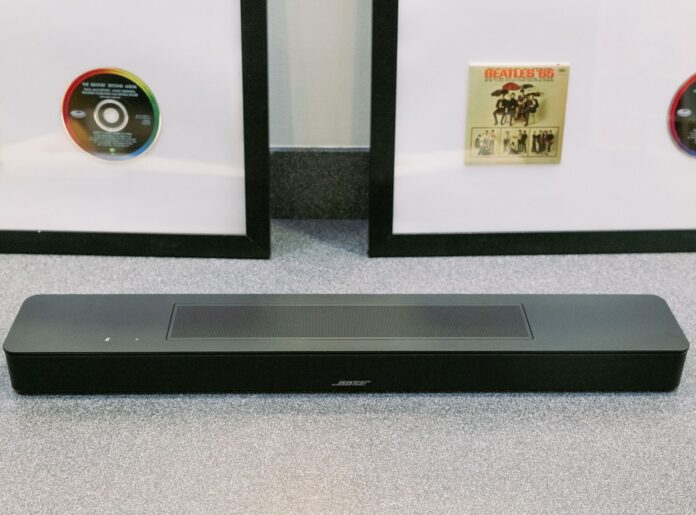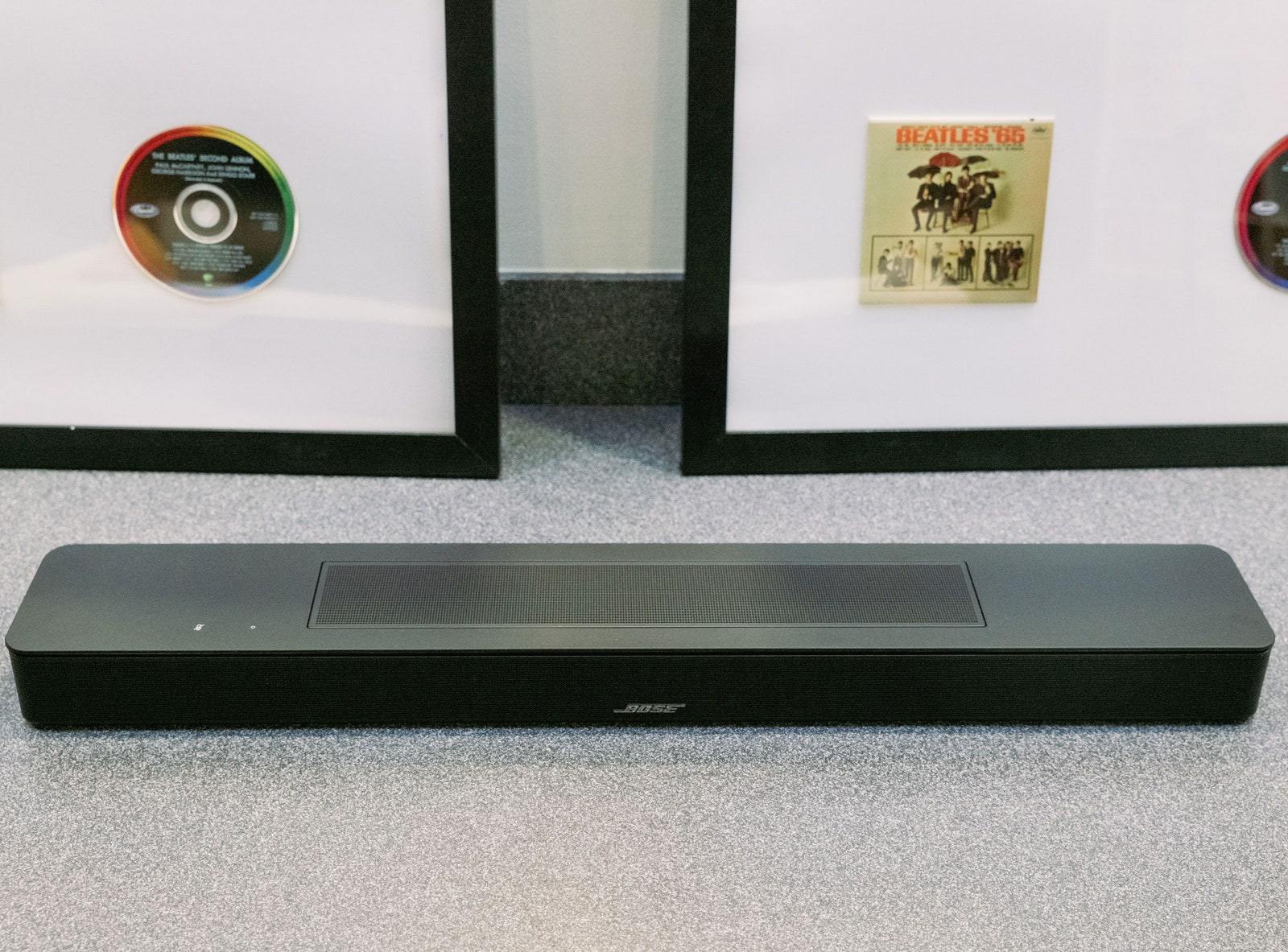Bose might have turned 60, but the audio company seems to be firmly settling into its graduate school era. After late founder Amar Bose donated majority ownership to MIT in 2011—a little-known fact—it became higher-ed’s most valuable audio brand, and broadened its focus. Gone are the days of wired speakers, or a few paltry headphone options to pair with your stylish Bose Wave CD radio.
In the past four years with CEO Lila Snyder—a former 15-year McKinsey consultant who is herself an MIT graduate with a master’s in mechanical engineering—Bose has seemingly righted a ship that appeared to be banking toward shore.
Snyder and her team grabbed the helm after Bose shuttered its retail stores in the middle of a global pandemic. She also helped turn a rickety start in the wireless earbud and Bluetooth speaker space into some of the sleekest, best-sounding models on the market. In a world where management consultants and tech executives are known for stripping companies for parts and raising prices, Snyder and a slimmed-down Bose have maintained the brand’s noise-canceling superiority in the face of stiff competition from Apple, Sony, and others.
What impresses me most about the Bose of 2024 is that it doesn’t have to play to the trends that publicly traded brands do: It has been an innovator for six decades, and it continues to be in everything from product development to retail strategy. It has quietly been deciphering the tricks behind in-car noise cancelation and beam-forming glasses, and has been developing personal line array systems for small-venue musicians.
Ten years ago, I’d tell folks that beyond its excellent noise canceling, Bose offered very little for most people. Now? I’d say the company is getting dangerously close to eating Sonos’ lunch.
60 Years of Sound
There are very few brands that have pushed personal audio technology so far forward in the past six decades. From vinyl record players to CDs, and now the streaming and portable listening era, Bose has made competitive products for higher-end listeners, even though it made a few missteps along the way—a few absolutely huge and uncomfortable pairs of early wireless earbuds, for example. It can be a surreal culture to join, Snyder says.
The first female CEO of Bose, Snyder grew up a tinkerer who saved up for her first Bose radio. “I grew up with Bose as an aspirational brand, and an iconic one. And it’s funny to join a company when you have stories from your background, right?”
Still, even though Snyder no longer has to save up for access to the latest kit, apparently new hires and old get the same repetitive query from folks in their personal orbits. “Every Bose employee will tell you that the most common question they get is, ‘Do you get a discount?’” Snyder jokes.
The company has always had premium prices, but in certain categories the products haven’t always matched the brand’s prestige: 2010s attempts at noise-canceling earbuds were bulky, sounded middling, and had poor battery life; and it also sold a line of too-expensive Bluetooth speakers with screens that nobody needed.
Then, after its physical storefronts were not having the billboard-like effect Bose wanted, the brand, just prior to Snyder joining, decided to dramatically pivot—a word that can so often be replaced with “panic”—to a strategy that focused on online sales and bolstering exhibits in existing storefronts such as Best Buy in the United States.
This seismic shift meant that every single Bose store in the US, Europe, Australia, and Japan shuttered, resulting in 119 store closures and hundreds of layoffs worldwide. So far, under Snyder’s stewardship, that swerve toward online and in-store retail has, according to the company, worked out—but it could have gone the other way.
Brands like Nike that have pivoted away from brand-owned retail stores have seen sales dives, but the key difference lies in Bose’s decision to lean into retail partners. By bolstering exhibits in places such as Best Buy and other stores, as well as leaning into sales on Amazon and other online retailers besides its own website, Bose has been able to maintain a broad reach while also not keeping retail overhead in-house. According to Snyder, this slimmed-down approach has been effective in righting Bose’s fortunes, especially when paired with excellent new products.
Audio Exclusive
In being a tech company that entirely focuses on audio products, Snyder says that the secret sauce at Bose is research. Engineers are constantly looking for innovation in materials, acoustics, design, production, and more. When asked about recent innovations in solid-state driver technology, for example, she isn’t shy about its prodigious market research.
“What’s interesting about Bose is we have been an audio company for 60 years,” says Synder. “We know we’re going to be in competitive markets. We’ve always been in competitive markets, whether that’s headphones, or in the home, or in the car. What makes us different is we’re all about audio. You can be assured we experiment with everything. When we believe something’s ready, we bring it forward. We’re always looking for technology that can change the game.”
This is particularly evident when it comes to noise canceling, which was pioneered by the brand for aviators—a market Snyder says Bose is proud to remain dominant in—rather than folks in the main cabin of the plane.
Using the Pros
By investigating what pilots needed to operate safely and comfortably in the cockpit, and constantly asking them for improvements and ideas, Bose was able to develop and trickle down what remain the best noise-canceling algorithms WIRED has ever tested. That makes sense, given that latest generation of Bose Quietcomfort over-ears and earbuds offer genuine professional-grade aerospace technology.
Snyder says the brand uses professionals, or semi-professinals in the case of its PA gear for small-venue musicians, not only to improve its products but also to market to folks who are interested in higher-end audio. “They’re a professional musician. They have a great ear. They know what great sound sounds like. Those products create a sort of halo.”
However, a significant marketing tool Bose used for considerable time was NFL games, where it was the sideline sponsor for headsets for eight years, ending the partnership early this decade. The partnership has since been taken over by Sony.
Looking Foward
The other problems Bose faces are ones that top-tier makers in all industries suffer from: It must keep innovating to maintain its place atop the mountain of noise canceling; and it must continue to make other products, such as speakers and soundbars, that do the same. Current projects that excite Synder include the company’s developing work in car audio, aiming to help reduce the road noise in cars that’s even more apparent in the quieter electric vehicle era.
“We have been, and we’ll continue to be, everywhere that music is important to our customers,” Synder says, not-so-subtly hinting at new tech to come. “We’re excited about what we’re about ready to bring to the market.”
In the weeks since our conversation, Bose has announced a new affordable pair of noise-canceling earbuds that have gotten rave early reviews (our review is forthcoming), as well as a new soundbar option that features an AI-based dialog mode.
Bose also announced that you can pair its Ultra Open earbuds to the soundbar to use them as faux-rear speakers in surround sound—just the type of genre-bending listening she was alluding to.
We expect to see more innovation and are keen to see what happens when Bose combines its beam-forming audio tech we’ve seen in its Frame sunglasses, and the noise-canceling and personal audio experiences it has been testing for the car. As has been true for much of its six decades, I have a feeling the best of Bose is yet to come.
Source : Wired














